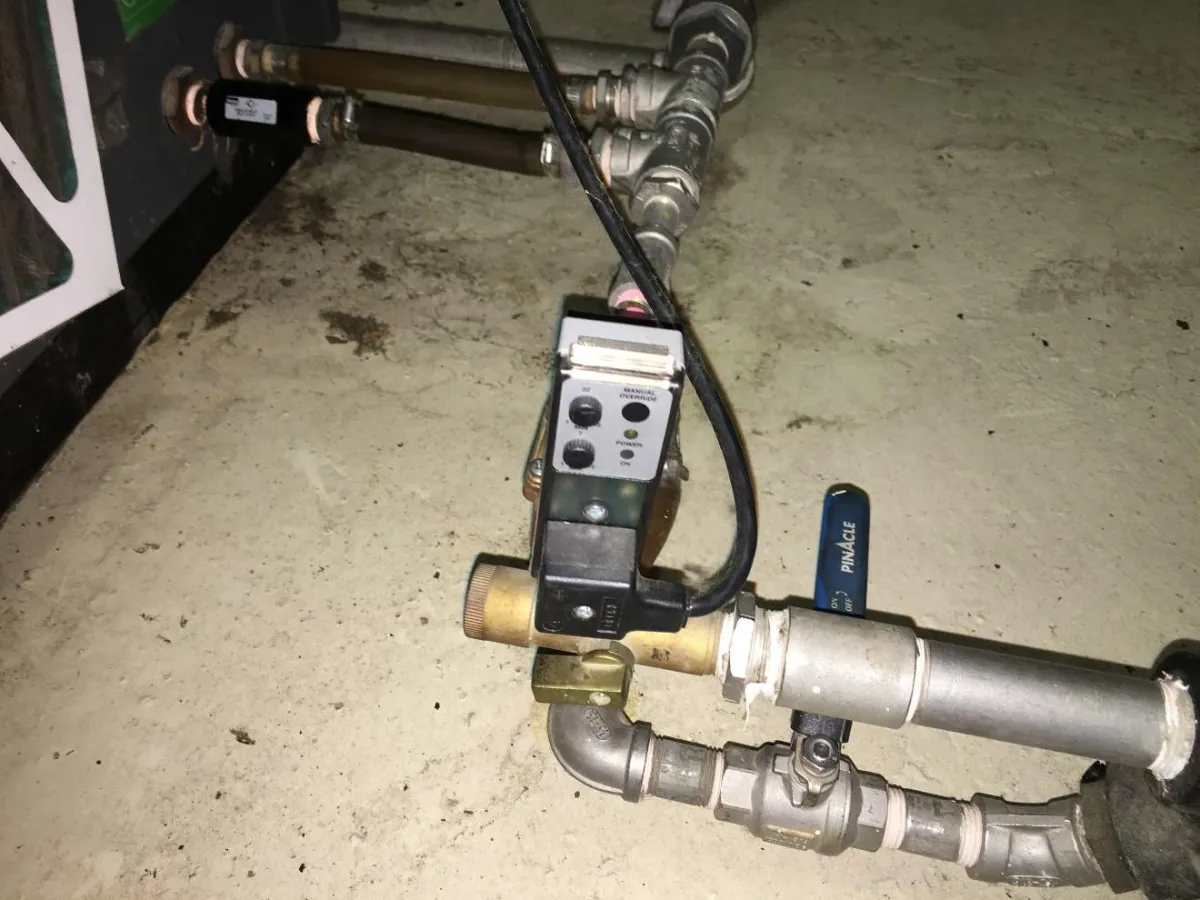
How much is my timer drain costing me?
When ambient air is squeezed into compressed air it can't hold as much water vapor. It's kind of like squeezing a sponge, free water forms as condensate and will travel down into your compressed air system if not removed. Similarly, when the 100 percent saturated air the compressor produces is cooled, either the compressed air piping, or within a refrigerated air dryer, the air must release some if its water vapor.
There quite a few different ways to remove this water, which by the way mixes with lubricant, rust, and dirt to form an ugly mess that can foul downstream components. Sometimes the water is removed by simply cracking open a valve or manually operating the drain every few hours. Float type drains may be employed to automatically expel water if it gets to a certain level. Solenoid operated drains controlled by a timer are very commonly used, and of course due to higher energy costs many compressed air system operators are now using more energy efficient airless drains.
Of these draining methods the cracked open drain and timer drain methods are more or less constant compressed air demands. But the moisture content in the compressed air is variable. For example, during a very hot and humid summer day a 50 hp air compressor could produce about 4 gallons of condensate per hour. In cool winter months the compressor might produce no condensate. But, a timer or manual drain would have to be set to worst case conditions to be effective, in this case four gallons equates to about half a cubic foot of required compressed air per hour. In normal conditions this compressed air flow is wasted.
But rarely are timer drains set to such a low level, human nature dictates that we must see or hear the effectiveness of the solution, so most often the timer is set to drain for something like 2 seconds every minute. For a drain small drain that blasts 30 cfm when operating, this would equate to about 60 cubic feet of compressed air per hour (one cfm average), or about 120 times the amount required during the worst case.
How much does it cost to drain the water from your system? At full time operation (8,760 hours) and 10 cents per kWh the estimated costs are as follows for each drain:
Manual drain at 2 cfm = $440 per year
Timer drain at 1 cfm = $220 per year
Airless or float drain at 0 cfm = $0 per year
Of course there is no free lunch. Manual or timer drains are easy to test and maintain. Float drains often have no method of testing, so you may not be quite sure if they are working (always use a drain with a test method). Airless drains are much more complex and may require extra maintenance, and definitely need to be regularly tested to make sure they are working.
The calculations above are quite conservative, in many cases, if a plant is having problems with moisture, there could be many drains blasting at excessive levels costing even more, especially if the drainage causes another compressor to start.
Learn more about compressed air at www.compressedairchallenge.org/calendar
